Activities that intentionally combine gross motor skills with fine motor activity influence attention. Key pieces being woven together in the photo below include resistive exercise for the core muscles of his trunk. These muscles are being stimulated by the sway of the swing as he holds on to the swing and moves through space. Body awareness is also being activated as he positions his entire body to point to the task card. Finally, focused attention is being activated as he intentionally plans to place each superhero onto the playmat as shown in the task card.
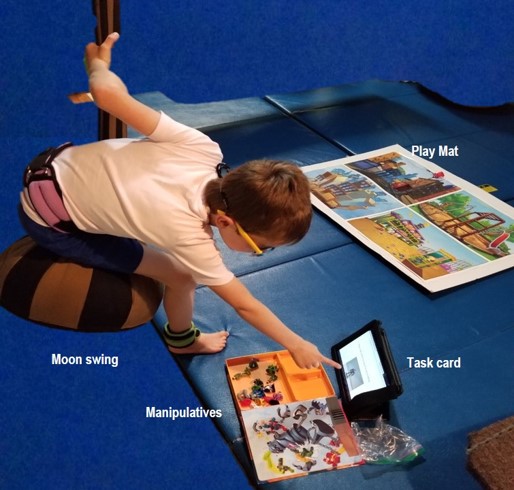
The boy shows the ability to integrate muscle action on both sides of his body as he swings over to one side and holds his torso close to the swing with his left hand. Meanwhile, the right hand leads the right side of his body into pointing to the instructions on the digital task card.
Types of resistive exercises
Resistive exercises can be helpful for children who have issues with attention. By using the large muscles of the body (muscles of the back and trunk, thighs, legs, and shoulders), additional motor control can be developed. These types of exercises produce brain chemicals that increase attention. This can be especially true when fun is included by adding the just-right level of challenge. Simply holding on and not falling off a slowly moving swing can add the type of playful challenge needed to stimulate attention. For example, consider the following types of activities shown in the next photos.
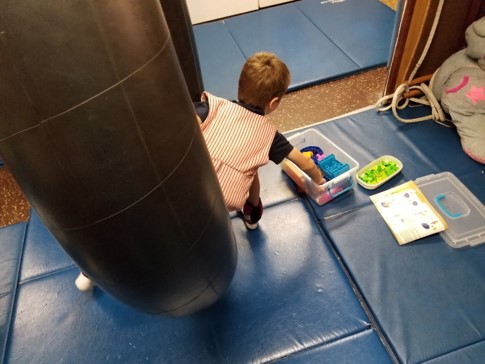
The youngster shown in this photo is engaging in resistive exercise. He is holding himself steady in the tire swing while reaching to collect pieces needed to build a boat. The playful challenge is to hold on and not fall off while reaching for the parts of the boat. The activity is set up to interweave the resistive muscle action of his core with fine motor activity, thereby stimulating attention.
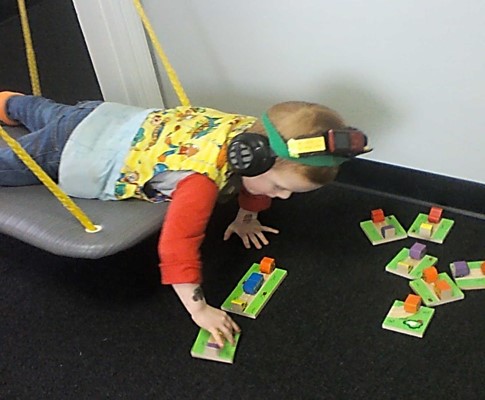
Push ups, resistive exercise from a platform swing is being used to activate attention with this activity. The fun challenge is finding matching wooden car and truck pieces and positioning them as needed to build a roadway.
Meanwhile, older children are more likely to enjoy Physioball walkout routines when the challenge of completing a model or a puzzle is added.
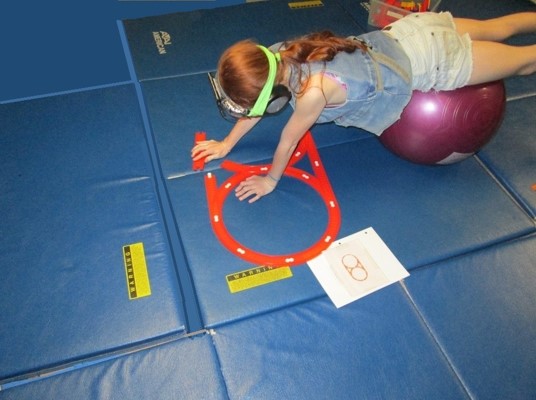
For example, this older girl is putting a train track together from a photo of a layout during her Physioball exercises. Once again, the resistive exercise stimulates production of brain chemicals that enhance attention.
Types of fine motor activities
Key parts of fine motor activities have been interwoven to provide coordination of the body while the hands work with a target. Skilled eye-hand coordination is more likely to emerge after gross motor activity has first raised the level of attention. Following gross motor effort with a fine motor “playful challenge”, increases the likelihood of success.
Key elements of the fine motor activities should include the following:
For additional information on the impact of motor skills on attention, read our blog on SPD, self-regulation and heavy work or this pamphlet from CHADD.

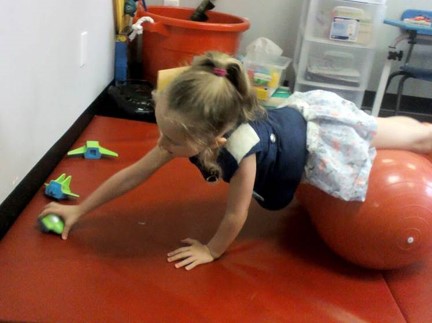
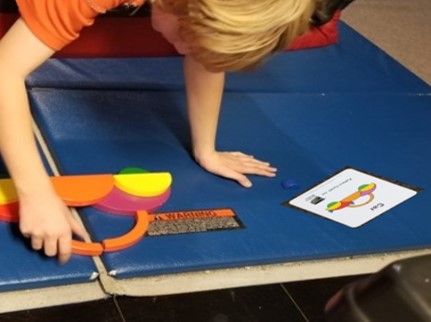
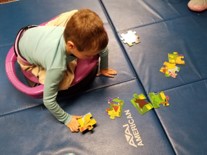

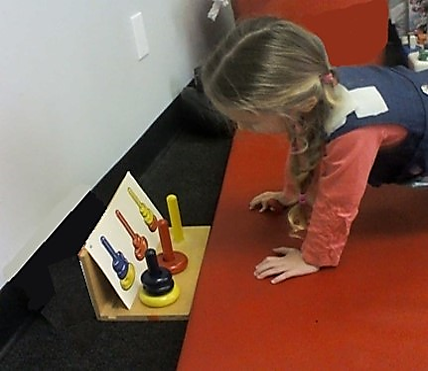
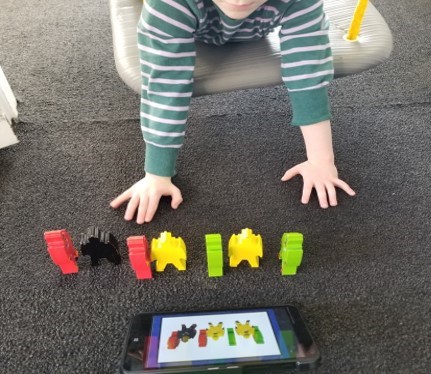
One Response to “Interweaving Gross Motor Skills with Fine Motor Tasks impacts Attention”